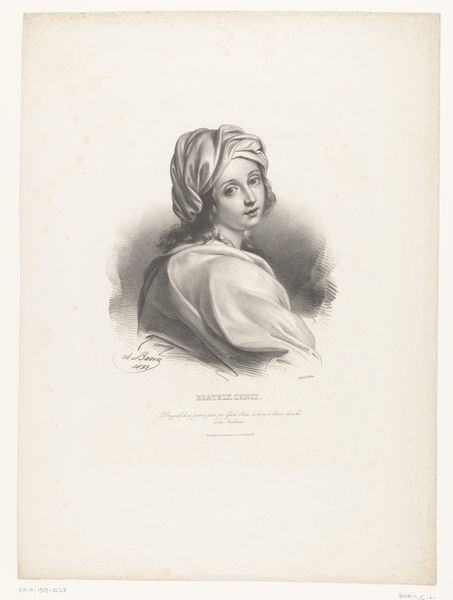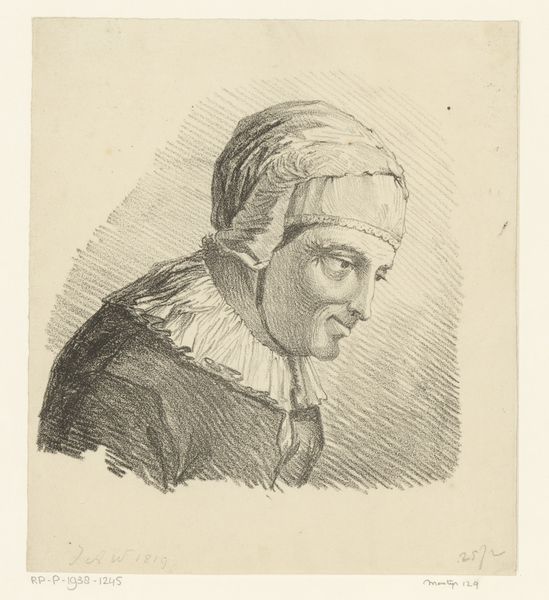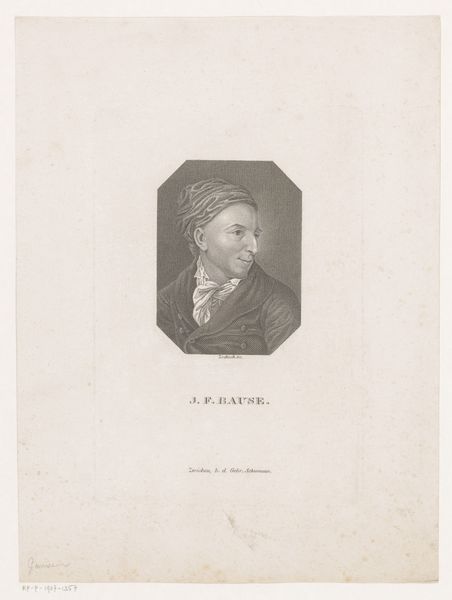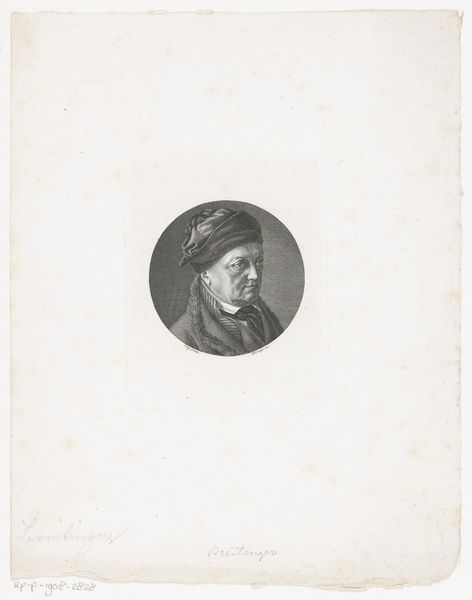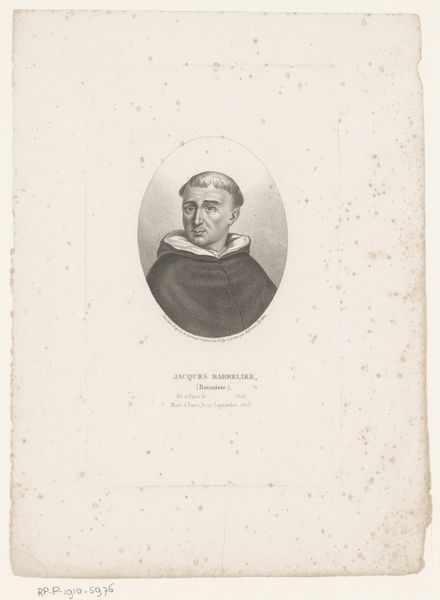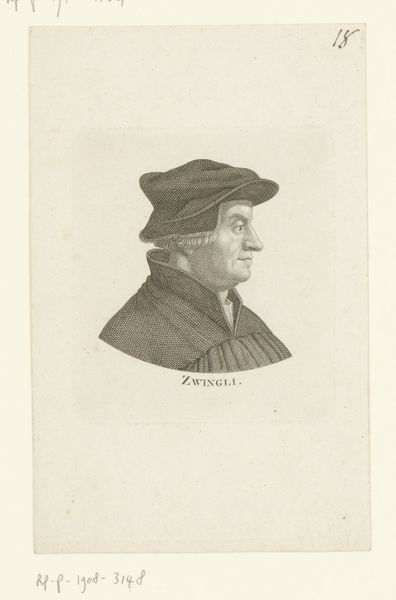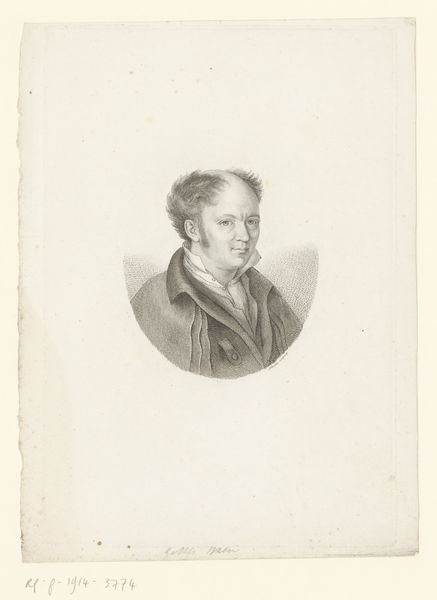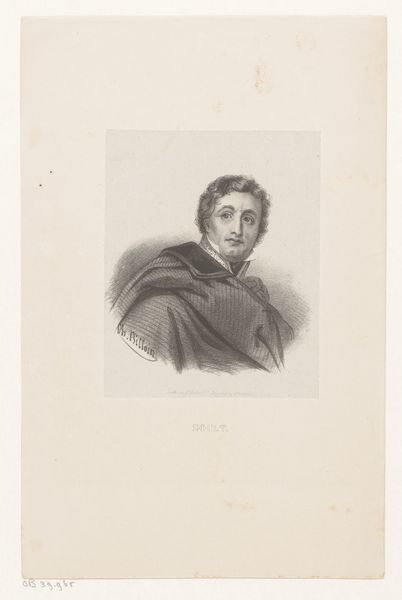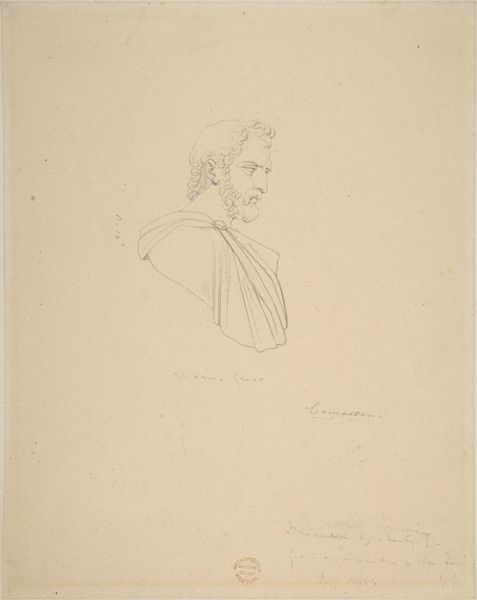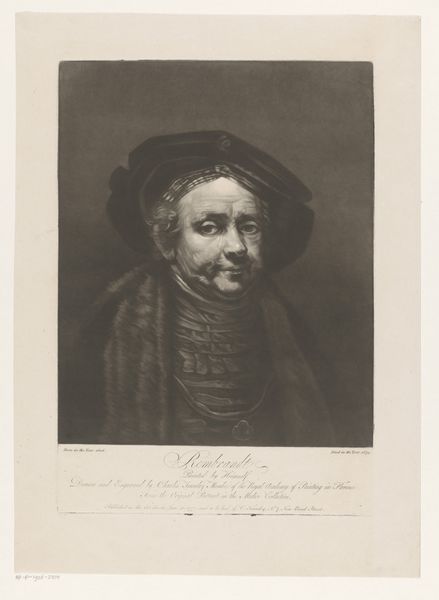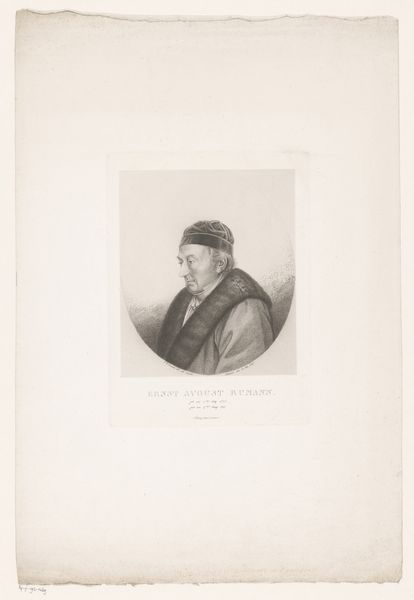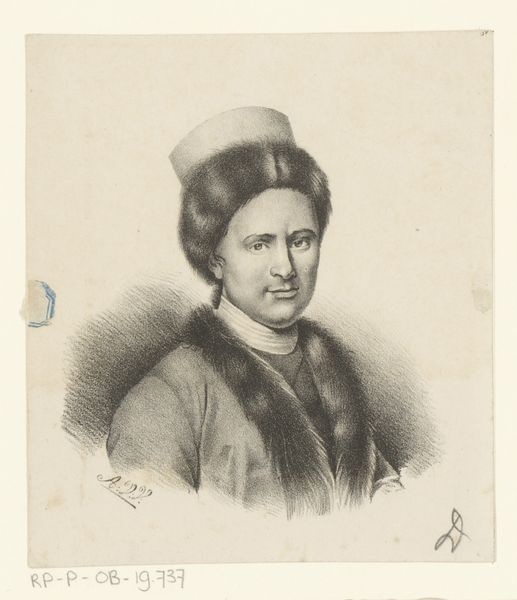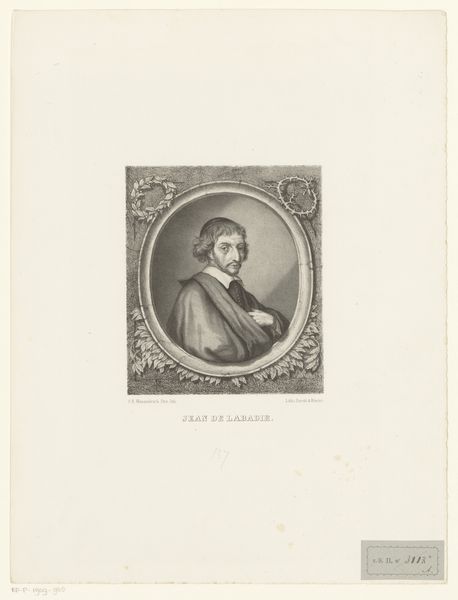
drawing, pencil
#
portrait
#
pencil drawn
#
drawing
#
neoclacissism
#
pencil sketch
#
charcoal drawing
#
pencil drawing
#
pencil
#
academic-art
Dimensions: height 237 mm, width 144 mm
Copyright: Rijks Museum: Open Domain
Editor: This is "Portret van Jean Althen," a pencil drawing made sometime between 1819 and 1843 by Ephraïm Conquy. The shading is incredible; it gives a real softness to the subject's face and turban. What are your observations? Curator: Indeed. The composition strikes me as particularly deliberate. Observe the strategic placement of the subject within the pictorial plane, affording ample negative space that accentuates the form and bestows an air of refined elegance. How might the artist’s considered deployment of light and shadow contribute to the overall effect? Editor: Well, the light catches the turban, almost making it seem like a sculpture. The dark shading around the fur collar and under his chin really brings his face forward. But, is there something more to be discovered in these textures and tonal gradations? Curator: Precisely! Reflect on the contrast between the smooth rendering of the face and the comparatively textured depiction of the fur collar. Is this tension intentionally constructed by Conquy? How do the formal properties enhance our engagement? Editor: It's interesting how the contrast in texture emphasizes both the face and the fur. I see what you mean about everything feeling intentional, like every mark serves a specific purpose. Curator: Consider the Neoclassical emphasis on line and form. Do you notice a similarity to other portraits of the period, a focus on geometric simplicity underlying naturalistic representation? These linear and tonal techniques allow an engagement with artistic practices from the past, made novel for the period. Editor: That's fascinating, looking at it purely as an object, and noticing all those calculated choices regarding light and form. I had not thought about it this way. Curator: A formalist perspective illuminates the silent dialogues artists have with art history through their conscious manipulation of form and material.
Comments
No comments
Be the first to comment and join the conversation on the ultimate creative platform.
